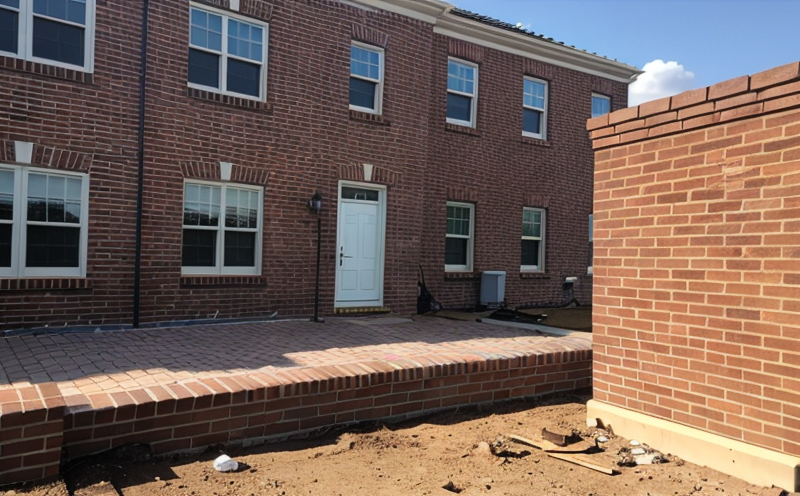ASTM C216 Water Absorption Measurement
The ASTM C216 method is a crucial procedure in the field of building and infrastructure testing, particularly for materials like masonry and brick. This standard test method provides guidance on determining the water absorption characteristics of these materials using a weighted loss technique. Understanding the water absorption properties of construction materials is vital for ensuring durability, longevity, and safety in various applications.
The ASTM C216 standard specifies that specimens should be dried to a constant weight before testing. The test involves immersing the specimen in distilled or deionized water at room temperature for 30 minutes. After removal from the water, the specimen is weighed immediately and then allowed to drain for a further 30 minutes. The difference between the initial wet weight and dry weight provides an accurate measure of the absorbed water.
This method ensures that the results are consistent and reproducible, which is essential in quality control and compliance with building codes and standards. For instance, in the construction of walls or partitions, understanding how much water a brick can absorb helps predict its performance under varying environmental conditions, such as humidity and temperature fluctuations.
In the context of sustainability, ASTM C216 aids in selecting materials that are less prone to damage from moisture, thereby reducing maintenance costs and enhancing structural integrity. This is especially important for structures exposed to harsh weather conditions or high humidity environments.
| Test Specimen Preparation | Measurement Parameters | Environmental Conditions | Data Interpretation |
|---|---|---|---|
| Dry specimens to a constant weight at 105 ± 2°C for 48 hours. | Immerse the specimen in distilled water for 30 minutes. | Ambient room temperature (23 ± 2°C). | The difference between wet and dry weights is used to calculate water absorption. |
For R&D engineers, this method provides valuable data on material performance under different conditions. By understanding the water absorption properties of bricks or masonry units, they can optimize formulations for better performance in targeted applications. Quality managers and compliance officers find ASTM C216 essential for ensuring that products meet regulatory requirements and industry standards.
ASTM C216 is widely recognized as a reliable method for measuring water absorption in masonry materials. Compliance with this standard ensures that construction projects are built with high-quality, durable materials, which ultimately contributes to the overall sustainability of infrastructure.
Industry Applications
- In the construction sector, ASTM C216 is used during material selection and quality assurance processes.
- The method is also employed in research and development to understand how materials behave under different environmental conditions.
- ASTM C216 helps ensure that masonry units meet specific performance criteria set by building codes and standards.
Customer Impact and Satisfaction
The ASTM C216 water absorption measurement service significantly impacts customer satisfaction in several ways. Firstly, it ensures that the materials used in construction projects are of high quality and meet stringent performance criteria. This enhances the durability and longevity of structures, leading to reduced maintenance costs and a better overall building experience.
Secondly, by using this standard method, customers can be confident that their products will perform consistently across different environments, thereby reducing uncertainty in project timelines and budgeting. Compliance with ASTM C216 also ensures that suppliers meet regulatory requirements, which is crucial for maintaining a positive reputation in the industry.
Lastly, the service provides valuable data that helps R&D teams innovate and improve product formulations. This not only benefits customers by offering better-performing products but also contributes to the overall advancement of the construction sector.





